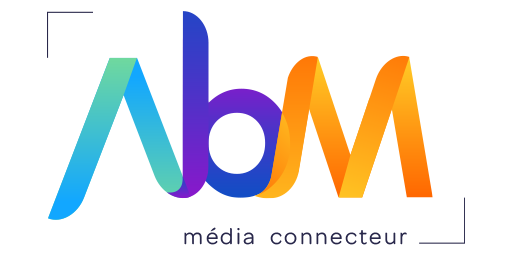The first competition for projects in the construction industry and territories
Productivity tools and vectors for the development of new services and uses, digital twins offer a tremendous opportunity to reposition territories, their infrastructures and their current and future buildings in the face of environmental realities and climate challenges.
The Digital Twins Trophies are organized by Twin+ , the online media and the first community dedicated to digital twins. They take place as part of the BIM WORLD Jumeaux Numériques exhibition in partnership with its co-organizers: buildingSMART France and BIM World. Each edition benefits from the support of private, institutional and academic partners.
This competition aims to promote, through trophies, the remarkable developments of digital twins in the construction and regional sectors. The competing projects may be at different stages of completion and maturity, of different scales and for different uses. An extension is made for the purpose of prospective research projects, particularly university ones.
Trophies







The competition rewards up to 8 applications.
The jury awards 4 trophies. The category titles are not previously defined. The jury determines them according to the projects submitted and the number sufficient to be put into competition. However, trophies make it possible to promote a digital twin project or achievement according to:
- its scale: “Building & Infrastructure”, “Neighborhood & Group of buildings or infrastructures” and “City & Territory”.
- its use: “Design & Execution”, “Operation & Maintenance”, “Simulation & Prediction”
- its location outside France: “International”,
- its development by research teams, particularly university ones: “R&D, Theses”…
All candidates are also in the running for the “Public Twin+ Trophy” awarded by the public.
The co-organizers buildingSMART France and BIM World award the “Digital Data Continuity Trophy for sustainable construction”.
Finally, the jury can decide to award a special prize.
The partners of the 2024 Digital Twins Trophies
Diary
Register from November 1, 2023 and receive validation of your participation. From January 1, 2024, you can submit the elements of your application before February 23, 2024 (11:59 p.m.): a video, an application form and 4 images.
The jurors review the applications and their documents. They use evaluation grids and can add comments.
The president brings together the jurors and validates the categories. The jurors' scores make it possible to define the finalists, decided if necessary by the jury which can also award a special prize.
Project videos are presented on twinplus.fr to collect the most “likes”, until April 3, 2024 at 1 p.m.
The ceremony takes place at 5:15 p.m. on the BIM WORLD Jumeaux Numériques 2024 TV studio at Paris Expo. Open to the public, it is followed by a cocktail.
Terms, eligibility and selection criteria
The “digital twin” is the digital replica, modeling of an object or set of objects already existing or planned. Although it is often anchored in reality and a real environment, the digital twin can in certain cases be a completely disconnected model (virtual twin). If a digital twin is most often represented in 3D, sometimes visualized in augmented, mixed or virtual reality, or even in an immersive metaverse-type environment, it can also be purely schematic.
The notion of a digital twin is quite recent. In fact, it has been developing for several years, through the digitalization of processes, the multiplication of standardized data and the rise of communicating objects (iOT). Interoperability between solutions (CAD, BIM, GIS, CMMS, GTB, etc.) facilitates its development. Considerable progress in IT (computing, storage, telecommunications) is promoting its growth in all sectors: construction, industry, health, aeronautics, energy, climate, etc.
Thus, the digital twin is built from different software bricks, often already in place in organizations, and initial digital data supplemented by new data from real-time sensors. The exploitation of this set of data and their interactions makes it possible to respond to numerous uses linked to design and construction, supervision, management and maintenance. The digital twin is also used to carry out analyses, simulations or forecasts, relying on machine learning and deep learning and Artificial Intelligence.
In the construction sector, the digital twin is presented at different scales, that of a building, a tunnel or a bridge. It can cover a set of buildings or infrastructures, such as a tram network. These groups can extend over a larger territory: a district, a city, a department or even more. Currently, one of the strong axes of digital twins is the integration of climate change in all its dimensions for sustainable construction.
The competition is open to project owners, communities and for the R&D and theses trophy to academics or researchers.
These may be local authorities or companies, owners of the land, infrastructure or building around which the digital twin presented is developed.
The application for a project initiated, developed and/or supported by a third party, operator or asset manager, IT services company, etc. is accepted as soon as it receives the approval of the project owner who, in pairs, submits the application.
Currently, digital twins are attracting more and more attention from elected officials, decision-makers and investors. Users are also interested in the subject, such as the media and, through them, professionals or the general public. The Digital Twin Trophies aim to highlight the spotlight placed on projects and achievements, their implementation, uses and direct and indirect benefits, particularly in the face of climate issues.
This additional communication is useful for everyone’s understanding and buy-in. It is an important aid in obtaining financing or in granting an operating budget.
Beyond a trophy and a ceremony between insiders and experts, each application will be promoted on Twin+, in particular through the broadcast of video presentations. The nominated projects and the winners will be the subject of press communication, articles and specific reports in dedicated publications distributed in particular during the Rencontres des Jumeaux Numériques. Other articles and video interviews will be shared throughout the year and until the next edition of the Trophies on Twin+, through social networks and by partners. Some project leaders will be invited to participate in round tables or conferences.
The selection criteria for the distinguished projects are set by a jury of experts aware that there is not a standard model. In fact, digital twins can be based on a wide variety of architectures and basic software bricks, adapted to the intended uses. Likewise, various paces and biases of data integration and consolidation may exist. Digital twins also offer a multitude of modes of representation, visualization and sharing of data with a number of users. Finally, digital twins are establishing themselves as support tools for varied uses, vectors of productivity and new, sometimes unprecedented, services. Beyond the more traditional selection criteria, such as the quality of the project, its potential or its innovative character, the jury will particularly examine the attachment given to the integration of issues linked to ecological transition and climate change.
The jury selection is carried out on all applications on the basis of application videos, written applications and attachments (images, PDF, screenshots).
Each juror has 15 days to review the applications. It awards different scores according to the following criteria: collaborative dynamics, engaged technologies & digital convergence, data management and quality, reproducibility, innovative approach and impact on climate issues (bonus point). The average of their scores determines their overall score for each application. If necessary, the juror makes a comment. Note, in the event of a lack of impartiality, the organizers may ask a juror not to examine one or more applications.
Gathered as a jury, the jurors validate the title of the 4 main categories defined by the organizers on all the applications received (the main criteria being scale, use, location and research context). The applications are thus distributed into the different categories and classified according to the average score of all the jurors. In each category, the 3 finalists are the subject of a debate based on the notes and comments of the jurors. In the event of a tie or lack of consensus, the jury proceeds to a vote by elimination. The president of the jury has one additional point that he can award if he wishes. He can only use it once.
The registration fee for the Digital Twins Trophies is €250 excluding tax (VTA +20%). Payment is required within 15 days after validation of registration.
These costs contribute to the organization and promotion of the competition, the manufacturing and engraving of the trophies.






